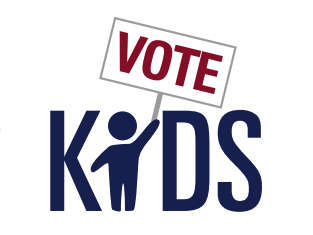While national events consume the news prior to the upcoming midterm elections, it is important to remember that there is a lot at stake for children in this election. Voting outcomes at the state and county levels of government can impact the health and well-being of children in our communities.
As pediatricians and volunteers with the local chapter of the American Academy of Pediatrics, we frequently meet with policy makers on behalf of our region’s children. As we prepare to enter polling stations next month, we must remember that our votes are the only voice that our kids have.
Pediatricians immunize children every day against common and deadly diseases. However each year, illnesses once forgotten are returning. Earlier this month, New York saw several cases of measles. Vaccine preventable diseases like whooping cough and influenza are now commonplace. Last season was the worst flu epidemic in a decade, with 128,000 cases in New York.
Six children died.
Yet last year the New York State Legislature strongly entertained relaxing immunization requirements for children in public schools, where these infections are easily spread. Only vigorous protest by the medical community and parent groups helped defeat the bill (but just barely). State legislators also did not pass a bill which would strengthen day care influenza vaccination requirements, despite evidence that this measure protects young children and their adult parents from being hospitalized with influenza. Data from New Jersey and Connecticut, which have enacted the same law, show that these policies improve the health of our toddlers and boost vaccination rates in a population of children highly vulnerable to flu.
Use of electronic cigarettes is another epidemic – mostly targeting teenagers. Roughly 10% of 8th graders have vaped in the past month, and among 12th graders, the rate is 16%. Though New York City, Long Island and several suburban counties have raised the age to purchase tobacco to 21 years, there is no state legislation protecting our teens.
Raising the age of tobacco purchasing to 21 years has been shown to reduce teen vaping and smoking by 50%, and already exists in California, Hawaii, New Jersey, Massachusetts, Oregon and Maine. However our state has been inactive on this issue for at least a decade.
Appealing liquid flavors in nicotine, like bubble gum, cotton candy and banana split, are clearly marketed to children and facilitate addiction. A recent survey found these flavors perpetuate vaping in almost half of all kids who use these products. To remove this “on-ramp” to childhood nicotine addiction, large cities like San Francisco have banned the sale of flavored e-cigarette liquids. But locally, no major municipality or county has taken similar actions, despite the existing public health data. Teen e-cigarette use is linked to subsequent marijuana use, and as New York State is poised to legalize marijuana next year, these protections will only become more important.
Seven children die from gun violence every single day. Since the tragedy in Parkland, Florida, there have been over 100 mass shootings. While these tragic events dominate headlines, people forget that 89% of accidental shooting deaths in children occur at home.
In the wake of the Sandy Hook Elementary School shooting, New York State enacted several common-sense measures to prevent gun violence. But our state does not mandate that guns at home be stored safely and away from children. This “safe-storage” proposal has the strongest public health evidence supporting its ability to keep children safe from firearms in the home. The federal government estimates roughly one-third of accidental deaths by guns could be prevented with this one simple law. Though this bill has been introduced annually for several years, it has been opposed by “gun-rights” advocates who claim that a requirement to purchase a container to safely store the firearm constitutes a “tax” on gun ownership.
Three years after the mass public health disaster in Flint, Mich., which exposed thousands of children to toxic levels of lead, New York State laws on childhood lead poisoning remain outdated. Your vote could determine if lead-exposed children have access to critical health services. Currently the threshold lead level to test a child’s home and water in New York State is double the level recommended by the Centers for Disease Control.
Though the American Academy of Pediatrics notes that there is no safe level of lead, a bill will be introduced next year to make our state regulations current with the latest science on toxicity. Such measures are the only way to make sure what happened in Flint does not happen here.
As pediatricians, we ask that children be at the top of your agenda when you vote. We urge parents and state leaders to invest in programs and policies that keep children, families and communities safe and healthy. Voting for kids is a small act that can have a profound influence on the health of our state’s children. Pediatricians across the country have been distributing ‘Prescriptions to Vote’ like the one pictured , urging parents to ‘Vote Kids.’ We owe it to our children to vote with their interests in mind.
Shetal Shah MD FAAP and Eve Krief MD FAAP are pediatricians and members of the Long Island Chapter of the American Academy of Pediatrics.

